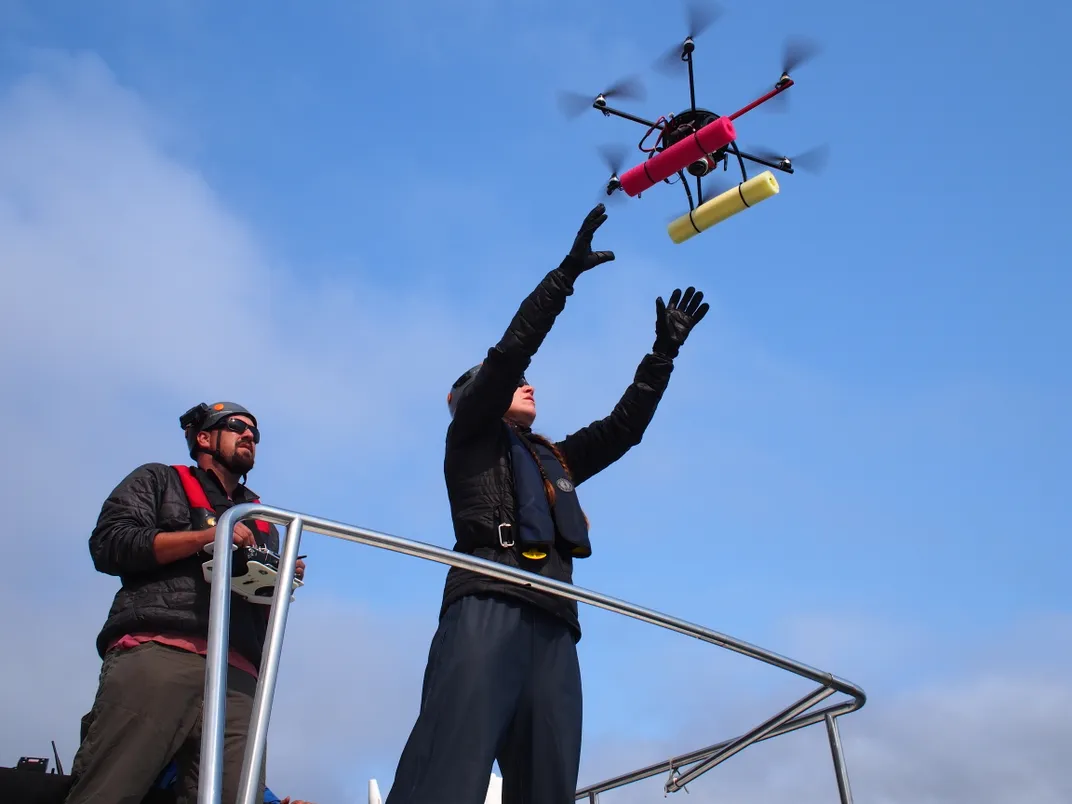To Find Out How Healthy Whales Are, Send in the Drones
A custom-built drone got close enough to whales to capture individuals’ distinctive markings
Mobly, a customer-built hexacopter, is noisy. (You can hear it buzzing in the video above.) Mobly is much quieter, however, than a helicopter and can get much closer to whales swimming in the ocean—close enough, even, to spot individual whales' distinctive markings.
Flying a drone just about anywhere can be fraught with challenges. Yet one group of marine researchers braved the paperwork and regulations to capture some footage of killer whales swimming along the northeast coast of Vancouver Island. Mobly hovered over pods of orcas and snapped good quality photos of 77 different whales over a few weeks in late August, reports Robbie Gonzalez for io9.com.
Killer whales love to each Chinook salmon, but researchers think that poor salmon seasons and fishing may be effecting the health of the whale populations. This drones'-eye view will help the team identify individuals and figure out how healthy the whales are.
A collaboration among Vancouver Aquarium, NOAA and a company called Ariel Imaging Solutions, the project aimed to measure orcas’ weight to see how the whales were faring. When orcas loose weight, they "replace much of the fat in their blubber layer with water in order to maintain a firm, streamlined shape," writes cetacean researcher Lance Barrett-Lennard in a blog post. Changes in body shape like this aren’t visible from the side, but the team suspected that it might be visible from above.
Barrett-Lennard describes what they found:
That first day was memorable not only for images of whales, but for the amount of high-fiving that took place....The images of the whales were stunning, and revealed right away that we weren’t going to have difficulty distinguishing robust and thin whales. We could readily identify individuals based on scratches and scars on theirs saddle patches, which were easier to see from above than I expected, and we could positively identify pregnant females. Most importantly, the whales didn’t react to Mobly visibly; not only did they not appear disturbed, they didn’t seem to notice him at all.
A good salmon season this year meant that most of the whales are doing well. However two orcas, an older male and a female who had lost a calf earlier this year, were very thin. Both were missing by the end of the short study.
The drone’s footage also captured some less serious footage—young orcas playing, lots of social interaction within groups and dolphins hanging out with the killer whales.

Barrent-Lennard notes that he looks forward to more drone-aided whale research, and, indeed, other teams are also working on this same idea. One group from Olin College and the whale conservation nonprofit Ocean Alliance hopes to use a drone to fly through whale 'blow,' the spray cetaceans spout from their blowhole. Mucus, hormones and microbes in the blow could help the researchers monitor whale health another way. That group has yet to get all the permits, but perhaps the success of the Vancouver-based Mobly can smooth the way.

